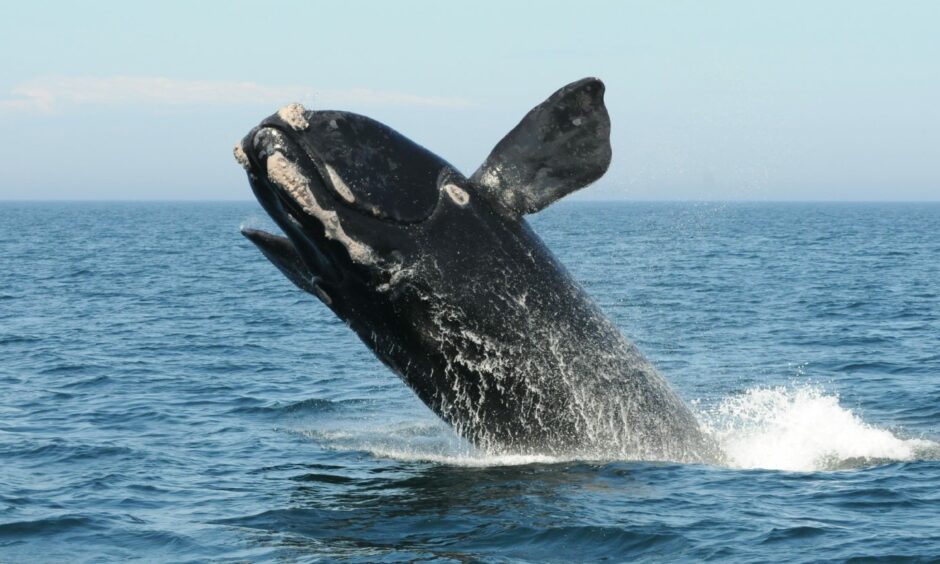
Michael Alexander speaks to a St Andrews University scientist whose US government-funded project aims to assess the impacts of offshore wind farms on critically endangered North Atlantic right whales.
They are the species that earned their name as the ‘right’ whale to hunt.
For centuries, North Atlantic right whales were targeted by commercial whalers because they were slow moving, inquisitive and are so blubber-rich they float when dead.
Today, however, North Atlantic right whales are one of the most critically endangered large whale species in the world.
Impact of human exploitation
Despite protection from whaling since the 1930s, years of historical human exploitation have taken their toll.
It’s thought there are now just 340 in existence with fewer than 100 breeding females – less than 3% of their pre-whaling slaughter abundance – left.
Post-whaling ban improvements have been in reverse since 2011.
Living in some of the northern hemisphere’s most industrialised stretches of ocean, modern threats include accidental entanglement in fishing nets, ship collisions, underwater noise and the impact of climate change on their food sources.
Some scientists believe right whales are now extinct in the eastern North Atlantic and now survive only along the east coast of the US and Canada.
They face perilous journeys when they migrate each year between their northern feeding grounds in coastal Atlantic Canada and New England to their calving grounds in the warm waters off South Carolina, Georgia and Florida, and back.
Now, as the world tries to work out how to tackle climate change, what impact could the development of massive wind farms off the eastern seaboard of the USA have on this endangered species?
Role of St Andrews project
Dr Phil Bouchet is a Research Fellow in the School of Mathematics & Statistics and the Centre for Research into Ecological and Environmental Modelling (CREEM) at the University of St Andrews.
He is working with CREEM Principal Research Fellow Dr Catriona Harris, from the School of Biology, Professor Len Thomas and Dr Enrico Pirotta, on a project funded by the US Government that aims to assess the potential impacts of offshore wind development on right whales.
The four academics are the core staff within a larger project team that includes additional experts from the University of St Andrews, SMRU Ltd (the consulting branch of the Sea Mammal Research Unit), the University of California Santa Cruz, the University of South Carolina, Duke University, and the Woods Hole Oceanographic Institution in the US.
The work is funded by the US Bureau of Ocean Energy Management (BOEM).
It is a two-year project due to be completed by the end of 2023.
In an interview with The Courier, Dr Bouchet said the USA is a “little bit behind” Europe in terms of offshore wind farm development.
However, they have major plans to develop wind farms all along the eastern seaboard to support a greener economy and the fight against climate change.
“Obviously given the state of the right whale population, the US government are concerned about any additional impact the construction of wind farm sites might have, which is why they have funded this project,” he said.
“It was a call for research that came out in the summer of 2021.
“We were the winners of the bid.
“At the institute where I work we are specialists in developing models and software tools to help answer ecological questions.
“Basically we are building software for the US government to use to be able to make predictions of right whale abundance within a time horizon of say 25-40 years from now.
“Its aim is to look at the potential impacts of wind farm development on the populations.
“The way this works is we are doing a big simulation.
“We are creating virtual animals on the computer.
“We’re setting them up in an environment that’s as realistic as possible in terms of the characteristics of the whales and the threats they encounter.
“We’re running the simulation over a year and seeing basically what happens to the whales in that time.”
Assessing likely impacts
Dr Bouchet said the “big focus” of the project is on bioenergetics.
As they simulate whales moving around the coast of the United States encountering vessels, fishing gear and wind farms, they’ll monitor how much energy the virtual whales are taking in and how much energy they are using over a year.
That gives an indication of what the impacts are likely to be if projected forward over the next three decades.
“The part of the wind farm lifespan of most concern to right whales and other wildlife is the construction phase because it involves all the dredging and the pile driving and all these activities that in particular produce really loud sounds,” he said.
“The operation and servicing is expected to impact them less.
“But there’s still a concern with the added vessel traffic that’s necessary to have vessels go out to maintain the equipment.
“There’s also rising concerns from some of us in the community with regards to the impacts on the oceanography and the way a large fleet of turbines may effect ocean currents and therefore also potentially prey.”
Interest in marine mammals
Originally from France, Dr Bouchet, who “cemented” his love for the oceans through scuba diving as a teenager, has been working in marine mammal research for 15 years.
He did his masters degree at the University of St Andrews then moved to Australia to pursue a number of dolphin and whale projects.
In 2018, he moved back to the UK with his partner who is also a University of St Andrews graduate and ‘marine mammal person’.
He started work for the University of St Andrews in 2019 and has worked with them on a range of whale projects since.
He’s previously worked with the US Navy to try and understand how whales are affected by military activities.
What are the main threats to right whales?
Detailing the other threats to right whales, Dr Bouchet said vessel strikes result in injuries as well as direct mortality.
Entanglements in fishing gear – particularly lobster pots and ropes – may also cause mortality, but are more likely to have effects over the longer term.
Energy available for reproduction and feeding is reduced – for example if ropes are snagged around their mouths or they use up more energy due to “drag”.
Over 80% of the population has shown signs of being entangled at least once and some individuals have been entangled up to seven times.
Those entanglement events can last anywhere between days and even years.
This leads to deteriorating health, stunted growth and lower reproductive success, including delayed calving and calves with lower probabilities of survival.
Noise impacts are also a source of concern from pile-driving, although there is only scant knowledge of how right whales respond to noise.
One component of the project involves conducting an expert consultation on noise effects.
Another threat comes from shifts in prey associated with climate change, especially the major changes in ocean conditions that have occurred throughout the North West Atlantic over the last decade.
This has led right whales to abandon previously reliable foraging habitats like the Gulf of Maine and Bay of Fundy and occupy new ones like the Gulf of St Lawrence, where adequate protection measures may not be in place.
Right whales feed on certain types of plankton species and certain life stages of plankton species.
Those species undergo several stages of development and not all stages are necessarily adequate for supporting right whale foraging.
Since the turn of the last decade – 2010/11 – there’s been a huge shift in the conditions of the North West Atlantic driven by climate change that has led to a re-organisation of where those prey catches are.
Since 2015, there’s been a huge increase of right whale presence in Canada in the Gulf of St Lawrence.
That was a problem because at the time there were no measures in place to protect right whales from the range of industrial threats.
This added yet another layer of mortality on top of an already “dire situation”.
Why should the whales be saved?
Dr Bouchet said it’s important right whales are saved because they are part of a larger eco-system and an integral part of the way the ocean works.
The effects of removing large predators and animals from other systems on land have been “drastic”.
There would be “unseen consequences for other species” if right whales became extinct, not to mention a commercial knock-on for the human food chain.
Damage caused by the human race and its abuse of nature is widespread.
However, he said it’s “great” to see the US government is ready to invest in research efforts geared to make a difference.
This tool will allow the US authorities to run different scenarios and make the best possible management decisions in response to the challenges faced.
While the critically endangered status of right whales means extinction is a real concern, there’s hope for them if all sources of mortality can be removed.
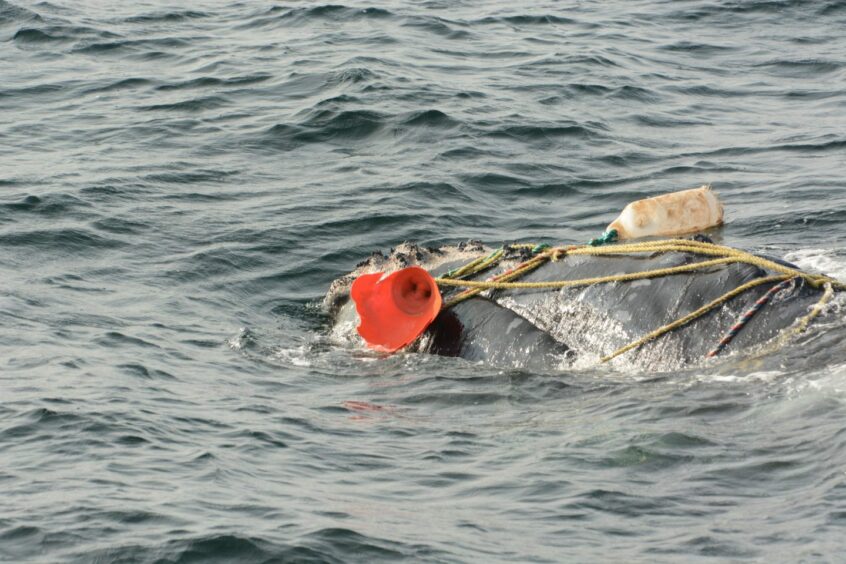

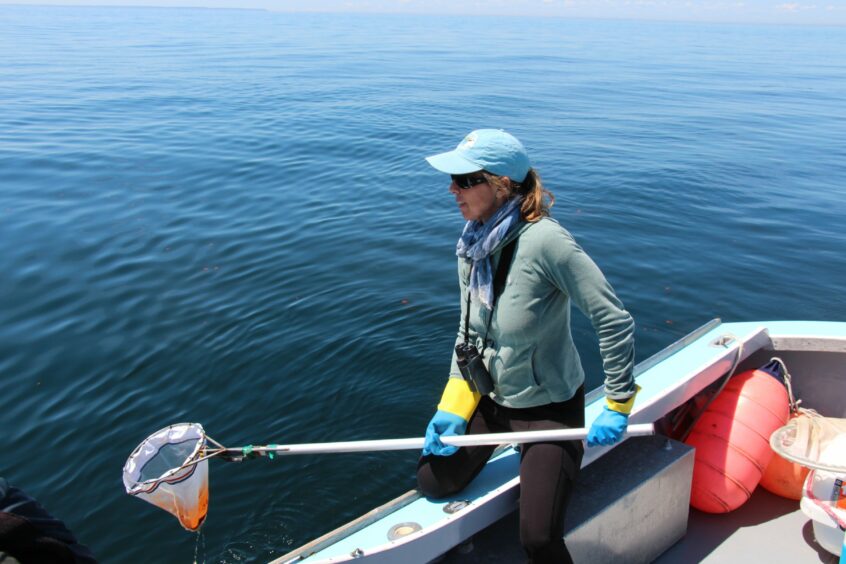
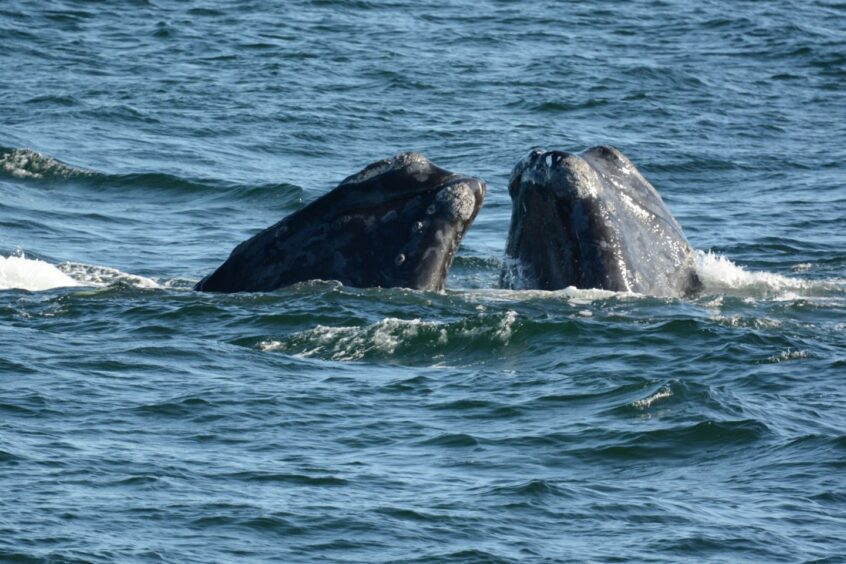

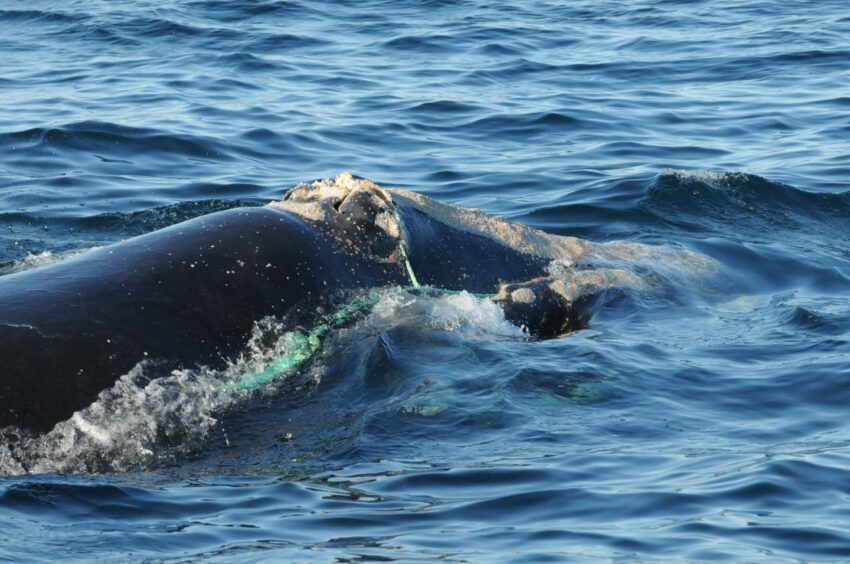
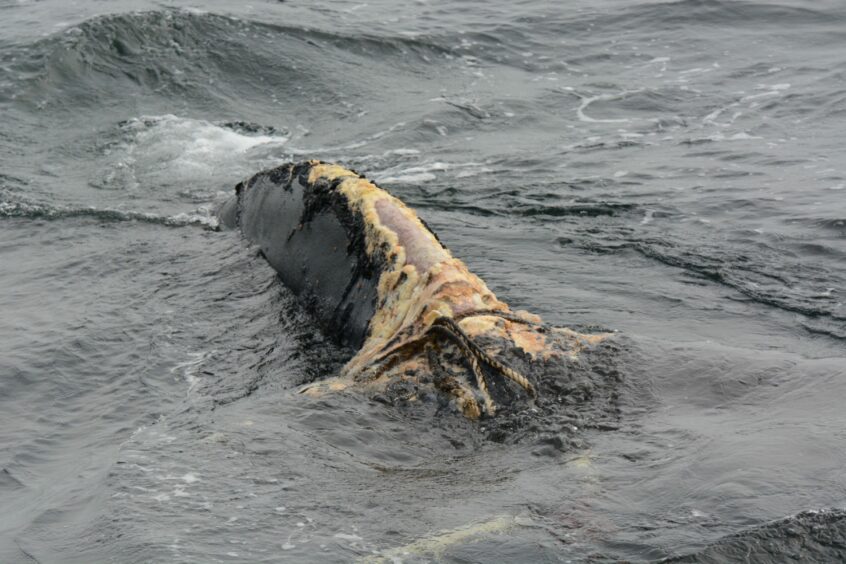
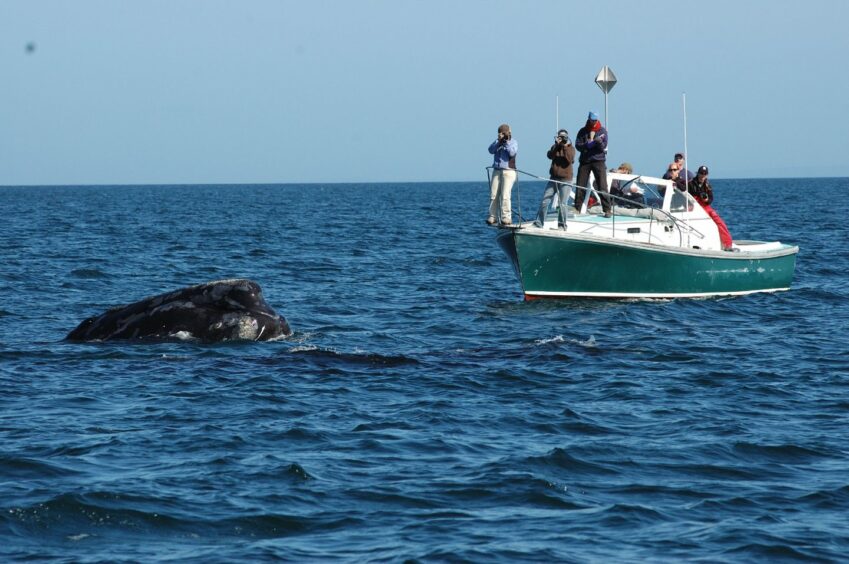










Conversation